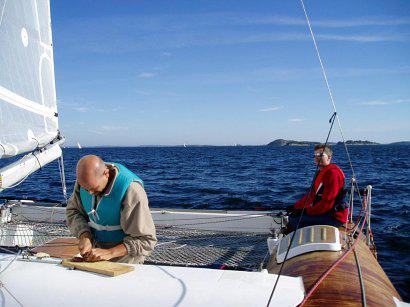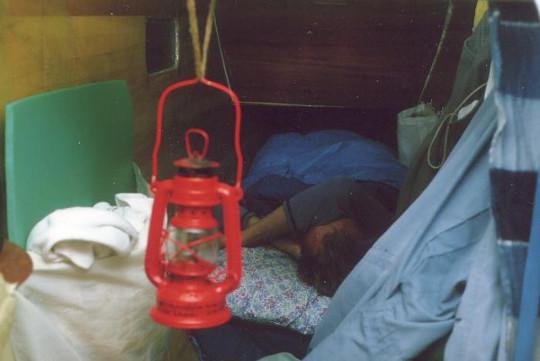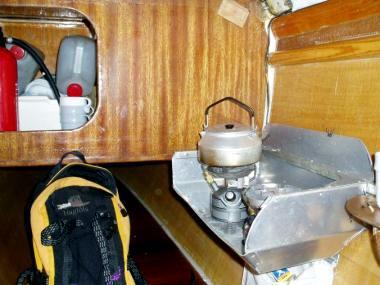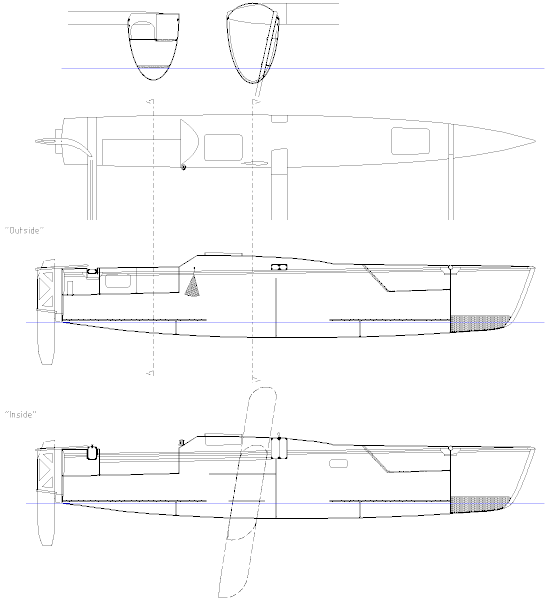Accommodation
On deck

Each hull has a tiny cockpit. They steal some space from the aft bunks, but together with the simple webbing back-rest they are worth that sacrifice and the extra building time. Almost all sail controls are routed to the cockpits.
The main beam is 35 cm high and provides the crew with surprisingly good shelter. Sitting on the trampoline just behind the beam and resting your back on the highly curved deck is quite comfortable. If the ride is not too wild, you can have a mug of hot beverage standing on the topside of the beam, and it stays there. Remember, cats hardly heel.
The 'deck' between the hulls is where the crew spends most of the time. The front part is an open net. Some people prefer the trampolines to be of more 'solid' fabric. I like the open net for the fore deck since one can hang on to it everywhere, and it is easy to tie down things to it. Furthermore, it does not catch waves and offers minimal air drag. Aft of the mast, I use a mesh – the black kind used on most beach cats. (This photo shows an earlier iteration where the aft trampoline was part open net.)
Below deck
The Spyder is geared more towards performance than creature comforts. She does clear the class rule minimum limits with some margin. It is not a huge margin, though.

Comfort down below is spartan and limited to four narrow (55 cm wide at the widest) bunks and there is 1.3 m of sitting headroom. Even though there are four bunks, one should avoid being more than three on a cruise lasting more than a few days. There is simply not room for the gear four persons bring. Not in the climate we have in Scandinavia, at least.

Cooking is done on two back-packing petrol stoves in the starboard hull. Utilizing back-packing gear is a great idea on a boat like this, since this type of gear is designed to be carried (compact and light) and quite developed nowadays. Rust might be an issue but not a big one in my experience. This might be due to the efficient ventilation of Scarlattikvarten. It is usually dry below apart from right after a particular wet ride, and even then, the water ingress is limited.
The head is a glorified bucket with an airtight lid. It is stowed in the port fore-deck hatch.
The following drawings show the basics of the hull interior.
